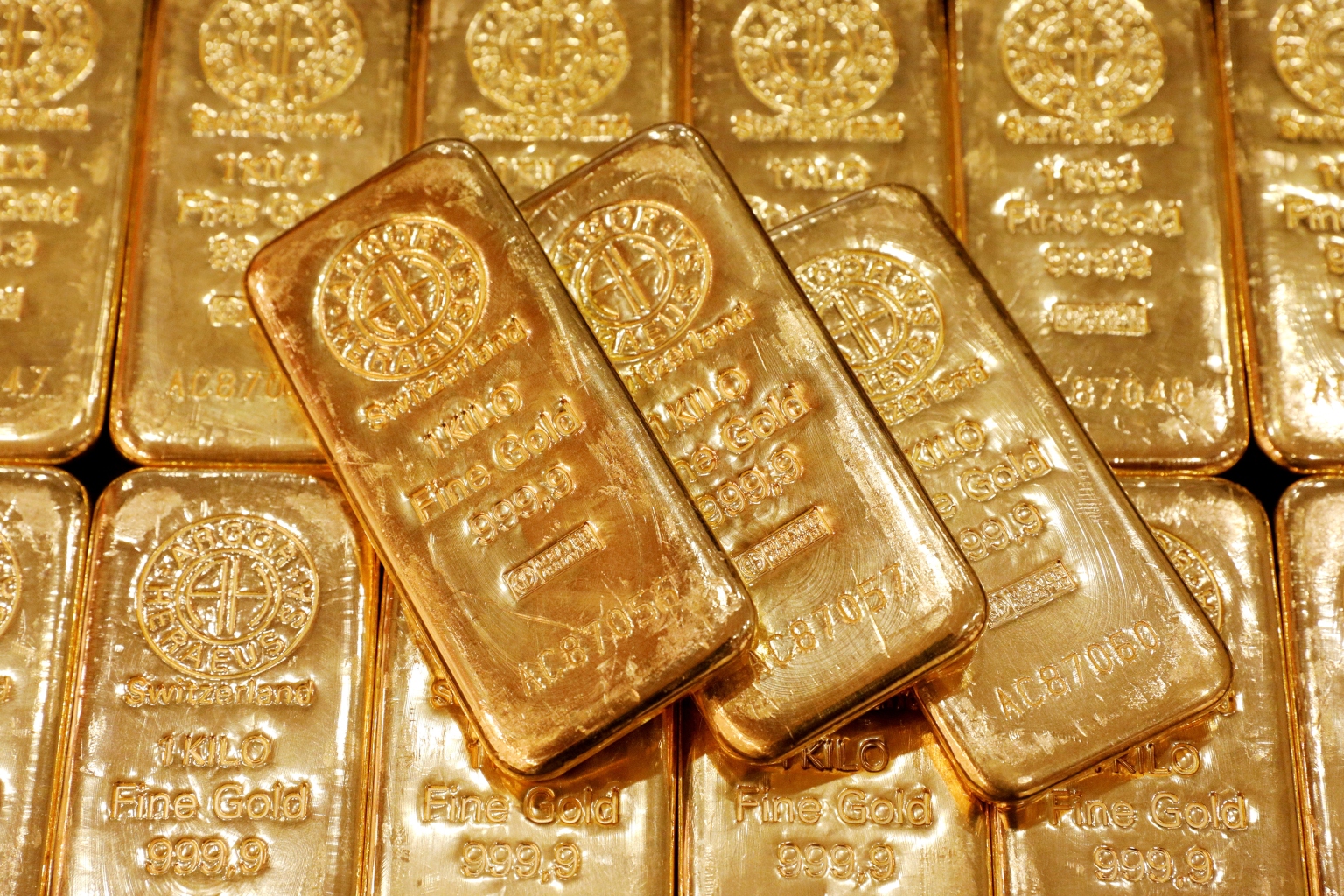Gold's haven appeal burnished by drumbeat of growth warnings
Sign up now: Get ST's newsletters delivered to your inbox

Bullion is down about 10 per cent from a peak in mid-March.
PHOTO: REUTERS
Follow topic:
SINGAPORE (BLOOMBERG) - Gold may be heading for another rally, with warnings over a global economic slowdown paving the way for a fresh push towards US$2,000 an ounce.
A potent mix of decades-high inflation, geopolitical turmoil and growing talk of recession should be bullish for the traditional haven, according to speakers interviewed ahead of a precious metals conference in Singapore this week.
Bullion is down about 10 per cent from a peak in mid-March, after the concerns that Russia's invasion of Ukraine might sprawl into a broader conflict dissipated. But with top banking executives now warning about fresh economic shocks, the situation is ripe for stagflation, which would be bullish for gold.
"After decades of massive deficit spending and ultra-loose monetary policies, we are heading towards a period of stagflation," said Mr Gregor Gregersen, founder of Silver Bullion. "In this kind of environment, safe-haven assets like physical gold and silver are some of the best things you can own."
He predicts gold and silver could rise to around US$2,000 an ounce and US$26 an ounce respectively by the year end, and could exceed those levels should there be unexpected "black swan" events.
On Tuesday (June 7), spot gold edged up 0.5 per cent to US$1,850.16 an ounce at 1.32pm in New York. Bullion for August delivery gained 0.5 per cent to settle at US$1,852.10 on the Comex. The Bloomberg Dollar Spot Index was little changed. Silver spot prices inched higher, while platinum and palladium declined.
According to Ms Rhona O'Connell, head of market analysis for regions including Asia at StoneX Group, bullion prices are facing resistance at US$1,930 an ounce, but if that level is cleared, then US$2,000 could be reached, propelled by technical trading.
"The economic and geopolitical fundamentals are more supportive of gold than they would be bearish," Ms O'Connell said in an interview before the conference.
Even as the spectre of higher rates and rising bond yields weighs on the non-interest bearing precious metal, the Federal Reserve's aggressive tightening stance has also triggered recession fears, particularly in the United States.
The gold price decline in recent months has come as the US central bank started its hiking cycle, when officials raised rates for the first time since 2018 and signalled increases at all six remaining meetings this year.
Goldman Sachs Group president John Waldron and JPMorgan Chase & Co chief executive officer Jamie Dimon last week both warned of shocks to the economy amid challenges, including risks from inflation and the fallout from the war in Europe. These uncertainties could well see more investors seeking a store of value.
Hawkish Fed
Still, a hawkish Fed, higher real rates and a relatively robust US dollar backdrop are among factors weighing on bullion, said Citigroup, which cut its three-month gold point-price target by US$300 to US$1,825.
The bank has kept its six- to 12-month forecast at US$1,900, with elevated asset market volatility and stagflation tail hedges likely underpinning support at around US$1,800, according to a June 1 report. Citigroup shifted its base-case outlook to neutral for the rest of this quarter.
Metals Focus forecasts gold could drop to a low of US$1,670 as inflation eases over the rest of the year, and real rates and yields rise. Still, bullion will massively outperform US equities as well as high-yield bonds, and possibly even investment-grade bonds in 2022, Mr Nikos Kavalis, managing director at the London-based consultancy, said at the conference.
There are other signs of demand. In April, gold in yen surged to a record on the back of the currency's weakness. While that prompted some selling in Japan by those who had accumulated bullion over the years to take profit, there was also a wave of buying by the younger generation seeking a hedge against inflation, said Mr Bruce Ikemizu, representative director of the Japan Bullion Market Association.
"Although gold in yen is still at very high levels, we see very steady buying interest," Mr Ikemizu said before an outlook panel at the conference. Prices will likely continue to trade in the US$1,800 to US$1,900 range over the next few months and may potentially end the year at US$1,950, he added.
Physical consumption could be supportive. The Perth Mint has seen strong physical demand for gold and silver minted bars and coins this year, especially in the US, according to Mr Cameron Alexander, manager of business development and industry research at Australia's largest precious metals refinery.
"The immediate outlook remains robust, but it's difficult to predict whether the elevated level of demand we have seen recently can continue into the second half," said Mr Alexander, who is also a speaker at the conference. "The recent surge in inflation numbers being printed in Europe and the US would suggest that demand for precious metals may continue for some time yet."

